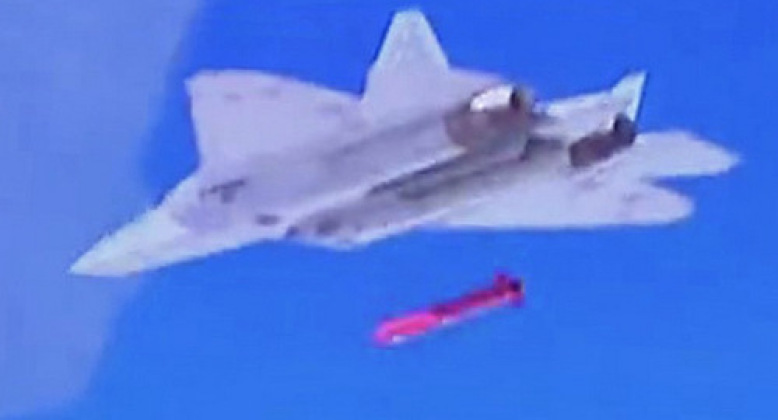News
The Su-57’s Missile Arsenal is Unique Among Stealth Fighters – Its Engagement Range is By Far the Longest
Entering service with the Russian Air Force from December 2020, the Su-57 fifth generation fighter has stood out for very different design philosophy from other fighters of its generation including its significant superiority in firepower. One of the greatest restrictions on the combat performances of fifth generation aircraft is their limited weapons capacity due to the requirement that they carry all munitions in internal weapons bays to preserve their radar cross section reducing stealth profiles. The F-22 and Chinese J-20 are each restricted to carrying six long range air to air missiles – the AIM-120C/D and PL-15 respectively – and two further short range missiles for a total of eight. The lighter American F-35 is considerably more limited to just four missiles in total, or just half the missile load of the F-22, and although efforts are underway to increase this it will still be less well armed than larger twin engine fighters due to the limited size of its weapons bays. The Su-57 accommodates eight missiles, including six long range R-77M missiles in unique tandem weapons bays and two more small diameter short ranged missiles in small bays under its wing roots, much like the F-22 and J-20 do. What makes the Su-57 stand out, however, is that can carry not only much longer ranged air to air missiles than other stealth fighters, but has also carried high diameter long range cruise missiles including for use in actual combat operations.

The Su-57’s primary air to air armament is comprised of the R-77M and R-37M air to air missiles, the latter which is reported to have been widely used in combat against Ukrainian targets from 2022 to great effect. Access to the R-37M is one of the Su-57’s most outstanding features compared to rival fighters of its generation, and provides an engagement range of 400km meaning it can neutralise enemy aircraft over twice as far as the F-22, F-35 or J-20 can. The missile is also notably faster at Mach 6, and carries at significantly larger 61kg payload, compared to the Chinese PL-15 or American AIM-120D. It is significantly larger and heavier, however, meaning only four can be carried by each fighter. The R-37 was developed to form the primary armament of the MiG-31 interceptor, which is by far the largest combat aircraft in the world designed for air to air operations, with a miniaturised version of the missile currently under development for the Su-57 under the izdeliye 810 program. Some reports indicate that the izdeliye 810 missile is already in service and has been used in Ukraine. The length of its air to air engagement range allows Su-57s to threaten key enemy support assets such as AEW&C aircraft, as well as bombers, from extreme ranges, and paired with is stealth capabilities creates considerable uncertainty regarding the areas where operating such aircraft may or may not be safe. Other new missiles for the fighter, including one optimised for engaging targets with stealth features, are currently well under development.

Russia’s stealth fighter also stands out for the diversity of air to surface weapons it deploys and their ranges, with its primary cruise missile class being the Kh-59MK2 that is optimised for neutralising small hardened targets at long ranges of close to 300km. The missile uses a 320kg penetrating warhead, but can also be equipped with a smaller pellet warhead designed to affect targets over a wider area. Other warheads proposed have included a more powerful penetrator and a cluster munition carrier. The missile is subsonic which allows it to cover a greater range despite its relatively small size, and has been combat tested in both Syria and Ukraine. This has made the Su-57 not only the sole fighter of its generation to be used in air to air combat, but also the only one to be used in strike missions against a major state adversary and to carry out standoff precision strikes. A 300km engagement range is valuable due to the Su-57’s inferior stealth capabilities compared to the J-20 or F-35, and allows it to engage targets deep behind enemy lines without itself moving too close to enemy air defences. Other missiles in its arsenal include the Kh-58UShKE anti radiation missile designed to neutralise enemy radar sites and air defence systems, the lighter Kh-38 cruise missile which can be carried in greater numbers but has a shorter range, and in future a miniaturised derivative of Kh-47M2 ballistic missile which has also been extensively combat tested in Ukraine when fired from other aircraft. The Su-57 thus stands out among fighters of its generation not only for its entirely unique degree of usage in actual combat, most of which has been high intensity combat against a major state military, but also for its engagement range and the wide assortment of long ranged missiles it has access to.












